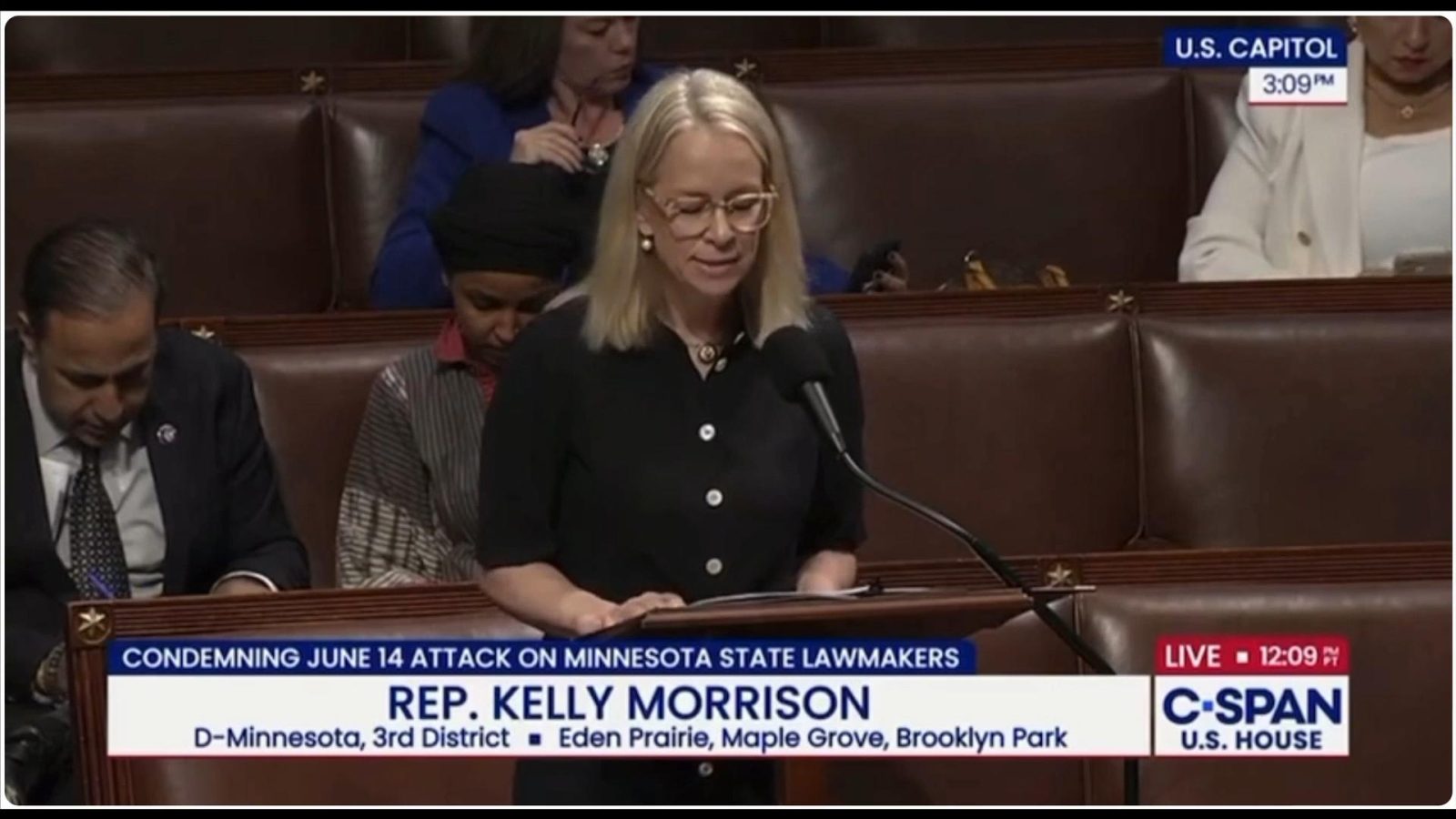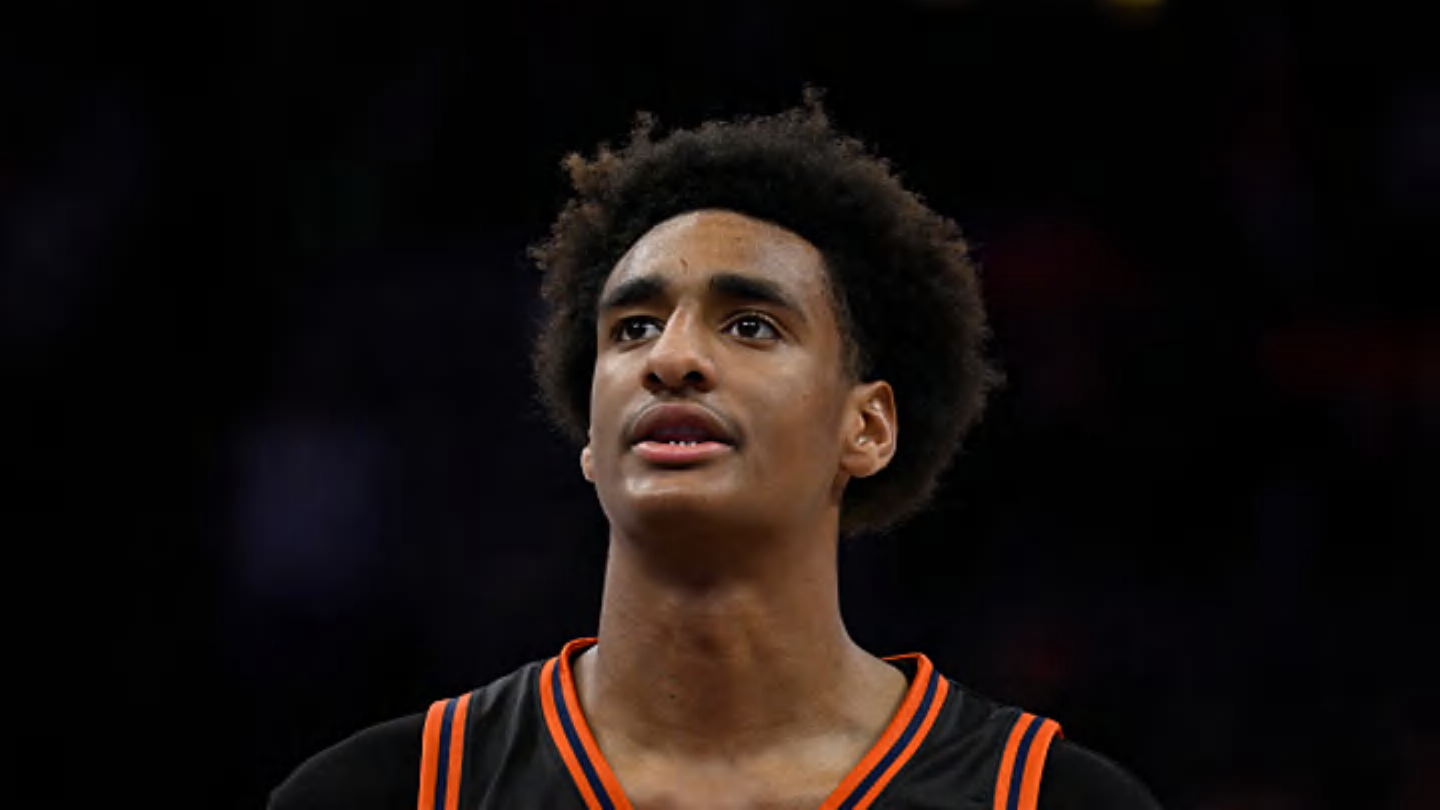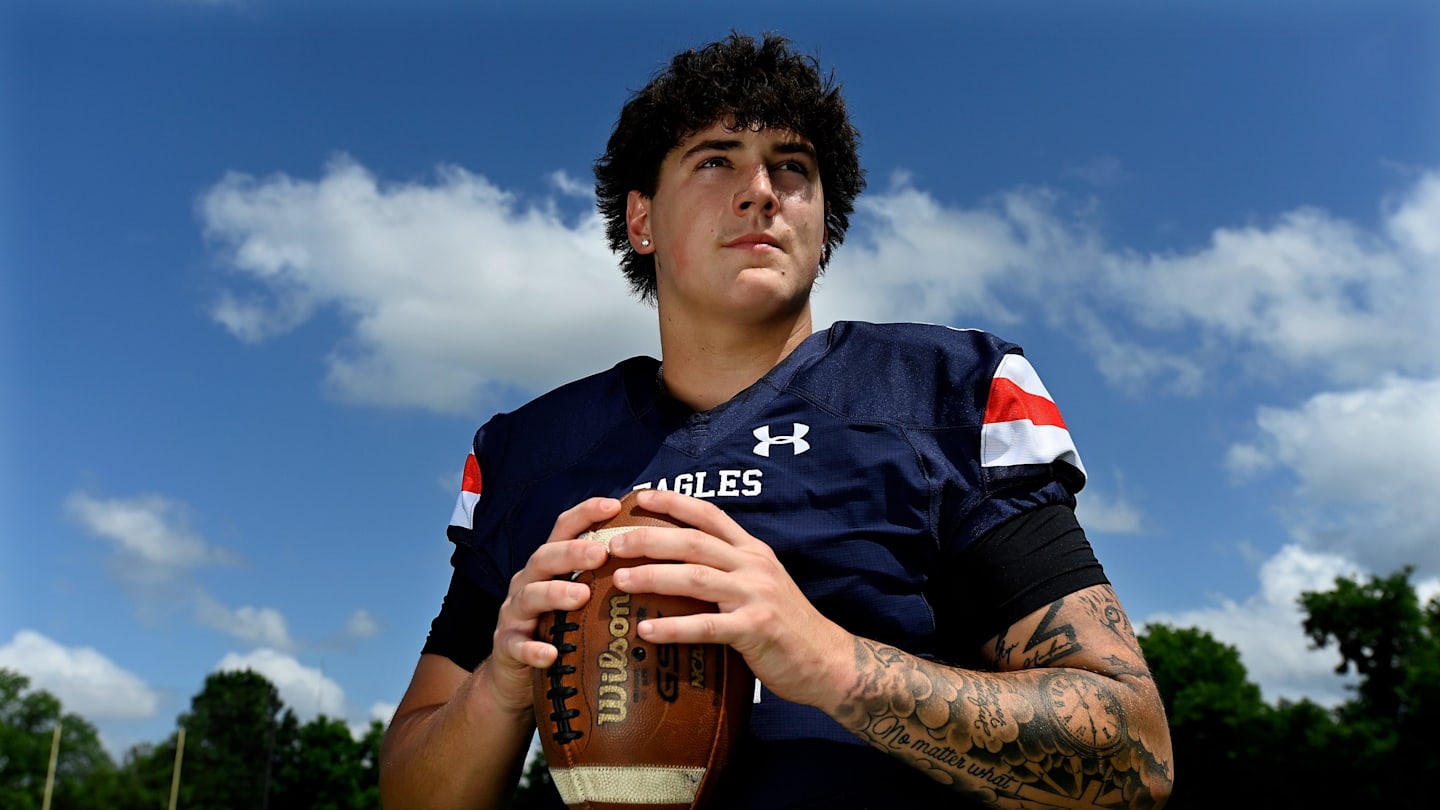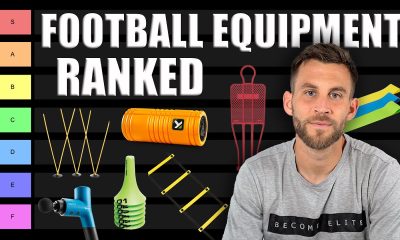NIL
U.S. Rep. Morrison Sponsors Resolution Condemning Political Violence
4:16 PM | Wednesday, June 25, 2025 [embedded content] This story has been updated to include House passage of resolution. U.S. Rep. Kelli Morrison took to the House floor in Washington, D.C., to speak on the June 14 lawmaker shootings. Morrison sponsored a bipartisan resolution that condemns the attacks on Minnesota lawmakers and calls for […]


4:16 PM Wednesday, June 25, 2025
This story has been updated to include House passage of resolution.
U.S. Rep. Kelli Morrison took to the House floor in Washington, D.C., to speak on the June 14 lawmaker shootings.
Morrison sponsored a bipartisan resolution that condemns the attacks on Minnesota lawmakers and calls for the rejection of political violence.
“Our words, our posts, our responses — they all carry weight and have serious consequences. This is our wake-up call. The escalation and normalization of violent rhetoric and political violence have gone way too far,” said Morrison on the House floor.
The U.S. House unanimously approved the resolution on Wednesday. The resolution was also introduced in the U.S. Senate.
Morrison represents District 3, which includes Brooklyn Park, Maple Grove and Plymouth,
You can see Morrison’s full speech on the following YouTube link: https://www.youtube.com/watch?v=EcAa8WwZl_0 .
Related: Rep. Hortman To Be First Woman To Lie in State at Minnesota Capitol
Brooklyn Park | Maple Grove | Plymouth

NIL
USC’s Alijah Arenas Reportedly Tears Meniscus in Blow to Upcoming Season
Nearly three months after his involvement in a frightening car accident, USC guard Alijah Arenas has reportedly suffered another setback. Arenas has torn his meniscus and is expected to be sidelined for at least six to eight months, according to a Wednesday afternoon report from veteran basketball reporter Chris Haynes. The 18-year-old son of former […]

Nearly three months after his involvement in a frightening car accident, USC guard Alijah Arenas has reportedly suffered another setback.
Arenas has torn his meniscus and is expected to be sidelined for at least six to eight months, according to a Wednesday afternoon report from veteran basketball reporter Chris Haynes.
The 18-year-old son of former NBA All-Star Gilbert Arenas is a rising freshman who chose the Trojans over a slew of other top basketball programs, including both Kansas and Kentucky. A native of Oakland who played high school basketball in Los Angeles, Arenas represented the West team in this year’s McDonald’s All-American Game.
On April 24, Arenas was placed into a medically induced coma after a Tesla Cybertruck he was driving crashed and caught fire. Two people pulled him to safety, and he did not suffer any major injuries; he was placed in a coma due to smoke he inhaled in the fire.
USC’s 2026 men’s basketball schedule has not been released, but should begin around early November.
More College Basketball on Sports Illustrated
NIL
Eli Manning Invests in XTech Youth Sports Safety Gear
Former New York Giants quarterback Eli Manning, a two-time Super Bowl champion, has made a strategic move into the sports equipment sector by investing in XTech, a company specializing in protective gear for athletes. The investment, announced on July 24, 2025, positions Manning as both a financial backer and brand ambassador for XTech, which is […]



Former New York Giants quarterback Eli Manning, a two-time Super Bowl champion, has made a strategic move into the sports equipment sector by investing in XTech, a company specializing in protective gear for athletes. The investment, announced on July 24, 2025, positions Manning as both a financial backer and brand ambassador for XTech, which is aiming to expand its footprint in the burgeoning youth sports market. This deal underscores Manning’s growing portfolio of post-retirement business ventures, blending his celebrity status with targeted investments in consumer-facing brands.
Details of the investment remain undisclosed in terms of exact figures, but sources indicate it’s part of a broader funding round for XTech, a firm known for its innovative padding and protective equipment used in football and other contact sports. Manning’s involvement comes at a time when the company is pushing to differentiate itself through technology-driven products that emphasize safety and performance, particularly for younger players.
XTech’s Market Push and Manning’s Role
According to a report from CNBC, XTech is leveraging Manning’s endorsement to penetrate the youth segment, where participation in organized sports has seen steady growth despite economic pressures. The company, founded in 2010, produces items like shoulder pads and helmets incorporating advanced materials for better impact absorption, and Manning’s star power is expected to boost visibility among parents and coaches concerned about concussion risks.
Manning, who retired from the NFL in 2020 after a 16-year career, expressed enthusiasm for XTech’s focus on innovation. “I’ve always been passionate about player safety, and XTech is at the forefront of that,” he told CNBC in an interview. This aligns with his personal brand, built on durability and leadership during his Giants tenure.
Broadening Investment Portfolio
This isn’t Manning’s first foray into business. Posts on X (formerly Twitter) from earlier in 2025 highlight his involvement in other ventures, such as joining Brand Velocity Partners in 2022 to advise on brand development, and his role in Omaha Productions, a media company co-founded with brother Peyton that recently reached an $800 million valuation following a venture capital round, as reported by Axios. These moves show Manning diversifying beyond sports commentary into equity stakes.
Additionally, a Bloomberg report from April 2025 noted Manning assembling an investment group to bid for a stake in the New York Giants, though that effort appears separate from his XTech deal. Such activities reflect a trend among retired athletes turning to private equity and startups to maintain influence and generate returns.
Youth Sports Boom and Competitive Edge
The youth sports market, valued at around $19 billion in the U.S. alone, is projected to grow amid increasing parental investment in children’s activities, per data from industry analyses. XTech aims to capture a slice by emphasizing customizable, high-tech gear that meets evolving safety standards from organizations like the NFL and NCAA.
Competitors like Riddell and Schutt dominate the space, but XTech’s niche in premium, performance-oriented products could gain traction with Manning’s backing. As noted in NBC New York coverage echoing the CNBC story, this investment mirrors strategies by athletes like Serena Williams and Kevin Durant, who have funneled capital into wellness and tech brands.
Strategic Implications for XTech
For XTech, Manning’s participation extends beyond capital; his network could open doors to endorsements from current NFL players and partnerships with leagues. Industry insiders suggest this could accelerate XTech’s expansion into international markets, where youth football is gaining popularity in Europe and Asia.
However, challenges remain, including supply chain issues and regulatory hurdles on equipment standards. Still, Manning’s track record—evident in the success of BBQGuys, another Brand Velocity-backed venture he supported—bodes well for XTech’s trajectory.
Long-Term Outlook and Athlete Investments
Looking ahead, this deal highlights the evolving role of celebrity athletes in consumer goods. A report from The Athletic on July 23, 2025, drew parallels between Manning’s career and emerging talents, underscoring his enduring appeal. If XTech scales successfully, it could yield significant returns for Manning while advancing sports safety.
Ultimately, as posts on X from outlets like Front Office Sports illustrate, Manning’s business acumen is reshaping how retired stars engage with industry, potentially inspiring more such partnerships in the years to come. With the sports equipment sector poised for innovation, this investment marks a calculated step in Manning’s post-NFL chapter.
NIL
Carolina Football Sells Out All Tickets Ahead Of 2025 Season
Filter by BaseballField HockeyFootballGeneralMen’s BasketballMen’s GolfMen’s LacrosseMen’s SoccerMen’s TennisSoftballWomen’s BasketballWomen’s GolfWomen’s GymnasticsWomen’s LacrosseWomen’s RowingWomen’s SoccerWomen’s TennisVolleyballWrestlingCross CountryTrack & FieldFencingSwimming & DivingLeadership AcademyAcademicsLee PaceExtra PointsStudent-Athlete DevelopmentAdam LucasTurner WalstonCarolina OutreachJV Men’s BasketballFeaturedCompliance Link 2
NIL
NIL promises made to recruits, now coaches wait for key decision to learn whether they can keep them – WFTV
LAS VEGAS — (AP) — Next week, college football coaches can put the recruiting promises they have made to high school seniors on paper. Then the question becomes whether they can keep them. Uncertainty over a key element of the $2.8 billion NCAA antitrust settlement that is reshaping college sports has placed recruiters on a […]

LAS VEGAS — (AP) — Next week, college football coaches can put the recruiting promises they have made to high school seniors on paper.
Then the question becomes whether they can keep them.
Uncertainty over a key element of the $2.8 billion NCAA antitrust settlement that is reshaping college sports has placed recruiters on a tightrope.
They need clarity about whether the third-party collectives that were closely affiliated with their schools and that ruled name, image, likeness payments over the first four years of the NIL era can be used to exceed the $20.5 million annual cap on what each school can now pay players directly. Or, whether those collectives will simply become a cog in the new system.
Only until that issue is resolved will many coaches know if the offers they’ve made, and that can become official on Aug. 1, will conform to the new rules governing college sports.
“You don’t want to put agreements on the table about things that we might have to claw back,” Ohio State coach Ryan Day explained at this week’s Big Ten media days. “Because that’s not a great look.”
No coach, of course, is going to fess up to making an offer he can’t back up.
“All we can do is be open and honest about what we do know, and be great communicators from that standpoint,” Oregon’s Dan Lanning said.
Aug. 1 is key because it marks the day football programs can start sending written offers for scholarships to high school prospects starting their senior year.
This process essentially replaces what used to be the signing of a national letter of intent. It symbolizes the changes taking hold in a new era in which players aren’t just signing for a scholarship, but for a paycheck, too.
Paying them is not a straightforward business. Among the gray areas comes from guidance issued earlier this month by the newly formed College Sports Commission in charge of enforcing rules involved with paying players, both through the $20.5 million revenue share with schools and through third-party collectives.
The CSC is in charge of clearing all third-party deals worth $600 or more.
It created uncertainty earlier this month when it announced, in essence, that the collectives did not have a “valid business purpose.” if their only reason to exist was ultimately to pay players. Lawyers for the players barked back and said that is what a collective was always met to be, and if it sells a product for a profit, it qualifies as legit.
The parties are working on a compromise, but if they don’t reach one they will take this in front of a judge to decide.
With Aug. 1 coming up fast, oaches are eager to lock in commitments they’ve spent months, sometimes years, locking down from high school recruits.
“Recruiting never shuts off, so we do need clarity as soon as we can,” Buckeyes athletic director Ross Bjork said. “The sooner we can have clarity, the better. I think the term ‘collective’ has obviously taken on a life of its own. But it’s really not what it’s called, it’s what they do.”
In anticipating the future, some schools have disbanded their collectives while others, such as Ohio State, have brought them in-house. It is all a bit of a gamble. If the agreement that comes out of these negotiations doesn’t restrict collectives, they could be viewed as an easy way to get around the salary cap. Either way, schools eyeing ways for players to earn money outside the cap amid reports that big programs have football rosters worth more than $30 million in terms of overall player payments.
“It’s a lot to catch up, and there’s a lot for coaches and administrators to deal with,” Big Ten Commissioner Tony Petitti said, noting the terms only went into play on July 1. “But I don’t think it’s unusual when you have something this different that there’s going to be some bumps in the road to get to the right place. I think everybody is committed to get there.”
Indiana coach Curt Cignetti, whose program tapped into the transfer portal and NIL to make the most remarkable turnaround in college football last season, acknowledged “the landscape is still changing, changing as we speak today.”
“You’ve got to be light on your feet and nimble,” he said. “At some point, hopefully down the road, this thing will settle down and we’ll have clear rules and regulations on how we operate.”
At stake at Oregon is what is widely regarded as a top-10 recruiting class for a team that finished first in the Big Ten and made the College Football Playoff last year along with three other teams from the league.
“It’s an interpretation that has to be figured out, and anytime there’s a new rule, it’s how does that rule adjust, how does it adapt, how does it change what we have to do here,” Lanning said. “But one thing we’ve been able to do here is — what we say we’ll do, we do.”
___
AP college sports: https://apnews.com/hub/college-sports
Copyright 2025 The Associated Press. All rights reserved. This material may not be published, broadcast, rewritten or redistributed without permission.
NIL
Georgia Bulldogs News
Georgia football finally had a good day on the recruiting trail on Wednesday after Rivals updated their recruiting rankings. On top of that, a former Bulldog fan favorite had a lot of positive things to say about his time at Georgia even after transferring away from the program. But the biggest story to drop on […]



Georgia football finally had a good day on the recruiting trail on Wednesday after Rivals updated their recruiting rankings. On top of that, a former Bulldog fan favorite had a lot of positive things to say about his time at Georgia even after transferring away from the program.
But the biggest story to drop on Wednesday came in the form Georgia’s future quarterback having his future NIL deal leaked.
Jared Curtis is coming to Georgia on a cheap NIL deal
Most would assume that five-star QB Jared Curtis would be receiving a pretty hefty NIL deal to come to Georgia. While that is the case, it is nowhere near as large as some other top QBs are receiving.
According to On3, Curtis will make $750,000 during his first season at Georgia in 2026. Now compare that to the roughly $2.6 million Bryce Underwood, who was the No. 1 QB in the 2025 recruiting class, will make on average per year at Michigan and it’s easy to see how great of a deal this is for Georgia.
Curtis will likely make more money as his career at Georgia takes off, but either way the Bulldogs are getting Curtis in Athens on a very team friendly deal.
Georgia still sits atop SEC team recruiting rankings
Alabama and Texas have been the hottest teams in the SEC on the recruiting trail over the last couple weeks. Meanwhile Georgia has only been able to earn a couple commitments. Even though that is the case, UGA still has the No. 1 recruiting class in the SEC after an update to Rivals 2026 recruiting rankings.
The Bulldogs still trail USC for the No. 1 class in the country, but Georgia needs just one more commitment to surpass the Trojans.
Carson Beck finally speaks fondly of Georgia
The relationship between Georgia and Carson Beck has been iffy at best since Beck decided to transfer from Georgia to Miami. However, it appears that Beck has no negative feelings about his time at UGA based on the below statement he made at ACC Media Days this week.
”I wouldn’t be the person or player I am today without Georgia, and I’ll always be a Bulldog, I am very appreciative of my time there.”
Sure Georgia fans may still have some negative feelings towards Beck for the way he left the program, but if he is ready to move on then it is probably best for Georgia fans to as well. Beck did a lot of good things at Georgia, so he should be celebrated for those moments even though his time in Athens didn’t end how anyone expected.
NIL
What we’re hearing about college basketball budgets in revenue-sharing era: ‘Money-dump year’
NORTH AUGUSTA, S.C. — Have we maybe, finally, reached the peak of college basketball spending? It depends who you ask … but it’s certainly possible. Why? Because this offseason, college sports’ old and new funding models — established name, image, and likeness (NIL) norms, plus the introduction of revenue-sharing — overlapped, giving programs a one-year […]

NORTH AUGUSTA, S.C. — Have we maybe, finally, reached the peak of college basketball spending?
It depends who you ask … but it’s certainly possible. Why? Because this offseason, college sports’ old and new funding models — established name, image, and likeness (NIL) norms, plus the introduction of revenue-sharing — overlapped, giving programs a one-year window to blow the bank.
“This year is the money-dump year because of everything that’s happening,” said one assistant coach at a mid-major-plus school. “We will never see these numbers again. Now, what does that mean moving forward? We don’t know.”
That uncertainty was a near-consensus sentiment among the 35 coaches The Athletic polled at Peach Jam last weekend. Much of that stems from the unknown ramifications of the long-anticipated House vs. NCAA settlement, which took effect July 1 and allows schools — for the first time — to pay athletes directly through revenue sharing, with a $20.5 million cap per school for all sports combined.
Athletes are still allowed to reach third-party NIL deals that don’t count against the cap, but those agreements could come under more scrutiny in a post-House world, with a new clearinghouse — NIL Go — set to review them. Will NIL Go approve the sorts of million-dollar deals that have become the industry standard over the last four seasons? This early into the revenue-sharing era, coaches don’t know.
But if one thing is clear, it’s that budgets for this season are eye-popping. To understand just how swollen budgets have become this offseason, we asked all 35 coaches: On average, what would you estimate teams in your conference spent on their rosters for the upcoming 2025-26 season?
Average estimated roster costs
| League | 2025-26 season (estimated) |
|---|---|
|
ACC |
$8.2 million |
|
Big East |
$8 million |
|
Big Ten |
$8.5 million |
|
Big 12 |
$8.6 million |
|
SEC |
$9.7 million |
|
Mid-major plus |
$2.3 million |
|
Low- to mid-major |
$525,000 |
Coaches were granted anonymity in exchange for their candor. The answers are telling — even considering the wide range of budgets within each league. (In the 18-team ACC, for example, the difference between the highest- and lowest-spending schools is eight figures.) But for as sexy as those numbers are, it’s crucial to remember why basketball budgets have grown, especially for next season.
Prior to the House settlement, most college players were paid by school collectives, who funneled money directly from donors to athletes under the guise of NIL. Now, in a revenue-sharing world, schools can distribute up to $20.5 million annually to players. Men’s basketball isn’t getting that entire pie — Opendorse, an NIL marketplace company, estimates most high-major programs will receive 20.3 percent of that on average — but still: that’s a few extra million teams can dole out.
So, when you combine old collective money — most of which schools intentionally spent before July 1 — with new revenue-sharing funds?
Voila: You get a basketball bubble, and budgets reaching never-before-seen heights.
“There is a realization for most,” said one Big Ten assistant, “that the money will not be the same.”
Revenue sharing vs. the ‘free market’
In many ways, one byproduct of the House settlement led to this offseason’s spending boon.
That would be the College Sports Commission (CSC), the new enforcement agency responsible for regulating revenue-sharing and cutting down on the pay-for-play deals that have become the industry standard. To regulate “fair” market deals, the CSC created a clearinghouse, NIL Go, which is run by Deloitte and which vets any third-party NIL deals worth over $600.
Considering schools have regularly been paying top talents hundreds of thousands — if not millions — of dollars annually, coaches were understandably apprehensive about the clearinghouse review process. Most who The Athletic spoke to admitted that they “front-loaded” contracts this offseason, spending as much collective money as possible in case NIL Go made it effectively unusable.
“With the collectives being in question, and all the details that are coming out about the settlement,” said one SEC head coach, “I don’t know what it’s gonna look like.”
And that uncertainty is still palpable. The CSC announced earlier this month that it wouldn’t clear any collective deals, seemingly validating coaches’ front-loading … only to reverse course on Tuesday after substantial backlash; the enforcement body now says it will consider collectives “valid businesses,” but will still hold them to the fair “range of compensation” rules that traditional third parties are subject to.
What does that mean for future spending?
Simply, if high-major programs are to sustain their current roster budgets, then supplemental collective money is a necessity. Consider: The average expected revenue sharing allotment for high-major teams — about 20.3 percent of $20.5 million — comes out to about $4.2 million … or half of what programs are estimated to be spending this upcoming year.
Is the college basketball economy really going to nosedive to that extent?
“You can’t put the toothpaste back in the tube,” an ACC head coach said. “The free market has (borne) what these numbers are, so now you can’t come back and correct the free market, and say, ‘Well, actually, this isn’t the free market. What we determine is the free market is the free market.’ If you were able to do that, we wouldn’t be running to Congress asking for help, because that would be legal. What we’re doing now isn’t legal.”
‘It’s just going to bring back cheating’
It’s easy to talk about college basketball spending in a macro sense. But what does that look like at the one-on-one level with players?
“You’re going to have a kid making 400 (thousand), and you’re gonna go, ‘Well, next year I only have 200 for you,’” an ACC assistant said. “That doesn’t usually sit real well.”
As a Big 12 assistant put it: “That’s going to be a hard conversation to kids you’re already loyal to.”
The ramifications could be landscape-shifting. With players having more freedom of movement than ever, coaches worry that a stark drop in spending — especially in the span of one offseason — will lead to the most frantic offseason of the NIL era yet.
Another roster construction concern: How much should coaches allocate for freshmen, especially those who rarely impact winning their first college season?
“A lot of these ‘26 kids have friends who were in the ‘25 class and got a lot of money — and now you’re offering them a quarter of that?” said an SEC assistant. “We’re gonna struggle initially, trying to explain the difference.”
Which is why only three top-25 recruits in the 2026 class have committed so far.
Other uncertainties abound, too. For all the talk about “average” allotments to high-major programs, for instance, what about the blue bloods set to receive an outsized percentage of their school’s revenue-sharing funds? What Duke and Kentucky receive, for instance, will be drastically different from what teams residing alongside powerhouse football programs — like Alabama, Ohio State, and Clemson — will ultimately get.
“If you’re talking true rev share,” one blue blood assistant admitted, “then we’ve been given an opportunity to be competitive.”
There’s also the looming threat of non-football leagues, namely the Big East and Atlantic 10. On one hand, not having football means most Big East schools won’t come close to paying out the overall $20.5 million cap permitted by the House settlement. But on the other hand? Those same schools can give their men’s basketball programs the largest cut of the revenue sharing pie, rather than the 20 percent that most of their high-major colleagues should receive.
“The Big East would be able to likely — with the commitment and the resources — double and triple some of these SEC and Big Ten schools,” said one Atlantic 10 head coach. “I don’t know what the next set of rules are going to be, but I guarantee you it’s not going to be that.”
Added the SEC head coach: “We talk as a staff that we might be competing against Atlantic 10 schools for kids, if it’s based on just money.”
We won’t know for a while whether or not the CSC truly has the teeth to stem the flood of collective money into college sports. But if it does, and revenue-sharing funds are something of a legitimate cap?
Expect teams to get, uh, creative when it comes to navigating the clearinghouse’s restrictions.
“There’s probably some guys out there,” one Big 12 head coach said, “that are going to figure out a way to do some things that are within the letter of the law — (but) maybe not the spirit of the law.”
Or, more succinctly, in the words of one WCC head coach: “It’s just going to bring back cheating. I don’t want to be naive about that.”
After surveying coaches at just under 10 percent of Division I schools, the only thing that’s become clear is how divided the college basketball universe is on what to make of revenue sharing.
Will it curtail massive donor influence in college basketball? Will it curb overall spending and level the financial playing field? Or is it just a slight impediment to the free market and the hefty prices that have emerged in the NIL era? Is it enforceable? Destined to get sued into oblivion? A precursor to collective bargaining?
There’s no clear answer to any of it.
“We continually ask for help and guardrails — and then when we get them, we complain about them, find ways around them, and then we sue the NCAA,” another ACC head coach said. “Sooner or later, coaches are going to have to decide what they want this ultimately to look like. And if we’re going to continue to find ways around stuff, or sue, then it’s just going to be chaos.”
(Photo: Kevin C. Cox / Getty Images)
-

 College Sports2 weeks ago
College Sports2 weeks agoWhy a rising mid-major power with an NCAA Tournament team opted out of revenue-sharing — and advertised it
-

 Motorsports3 weeks ago
Motorsports3 weeks agoTeam Penske names new leadership
-

 Sports2 weeks ago
Sports2 weeks agoNew 'Bosch' spin
-

 Fashion1 week ago
Fashion1 week agoEA Sports College Football 26 review – They got us in the first half, not gonna lie
-

 Sports1 week ago
Sports1 week agoVolleyball Releases 2025 Schedule – Niagara University Athletics
-

 College Sports3 weeks ago
College Sports3 weeks agoMSU Hockey News – The Only Colors
-

 Sports2 weeks ago
Sports2 weeks agoE.l.f Cosmetics Builds Sports Marketing Game Plan Toward Bigger Goals
-

 Health1 week ago
Health1 week agoCAREGD Trademark Hits the Streets for Mental Health Month
-

 College Sports2 weeks ago
College Sports2 weeks agoBuford DB Tyriq Green Commits to Georgia
-

 Youtube2 weeks ago
Youtube2 weeks agoWill LeBron James request a trade? 🤔 Windy says MULTIPLE TEAMS would make offers 👀 | NBA Today






















![[BINGO] PNC 2025 Survival Stage Day 1](https://yoursportsnation.com/wp-content/uploads/2025/07/bingo-pnc-2025-survival-stage-day-1-400x240.jpg)
![[BINGO] PNC 2025 Survival Stage Day 1](https://yoursportsnation.com/wp-content/uploads/2025/07/bingo-pnc-2025-survival-stage-day-1-80x80.jpg)

































